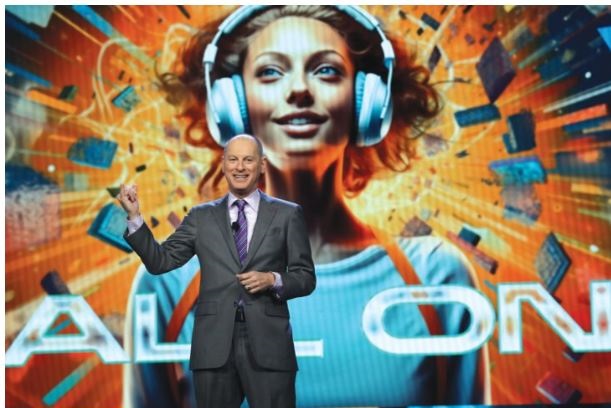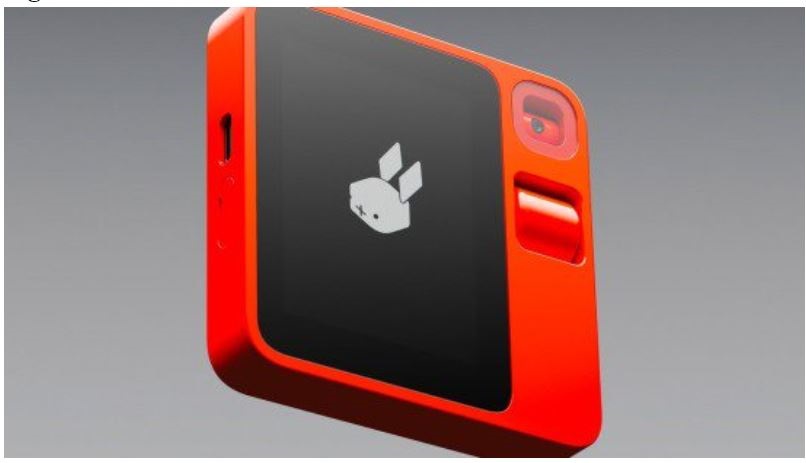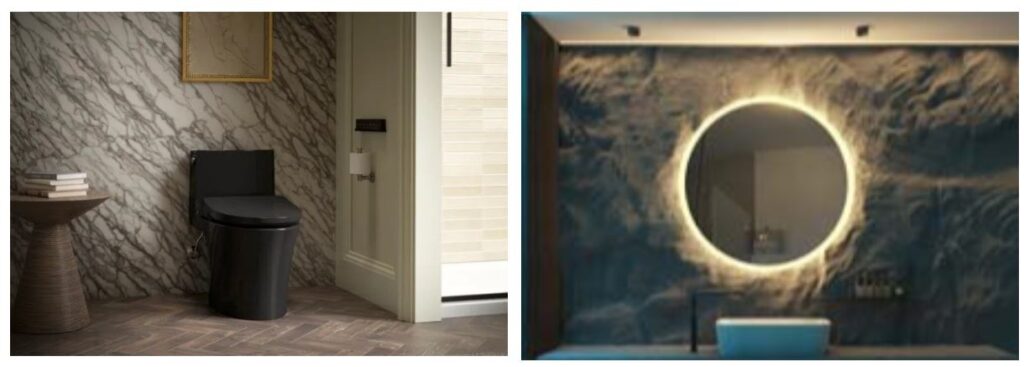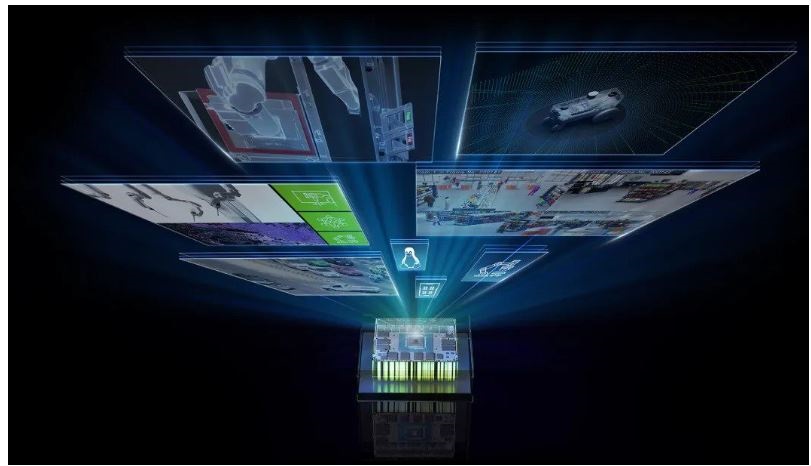There are few things that are more fun and tougher than attending CES. It’s fun because you get to see tomorrow’s toys and catch up with friends. It’s tough because it’s so darn big, it’s impossible to see all the great stuff and the products/services you want to/need to get updated on because they are spread across the many locations and are never—we mean never—located in close proximity. But AI was everywhere, and the entertainment (streaming) industry is raising its stake in the global consumer market with their presence there.
CES 2024: A big presence in artificial intelligence
After all these years, it’s great to get through the holidays and make our annual trek to Las Vegas to see what’s new, what’s exciting, and what the **** were they thinking with their techie offerings.
For many years now, Gary Shapiro, CEO of Consumer Technology Association (CTA), has been opening the CES show and giving folks an idea of what they’ll see and miss during the four-day event, this year spread across 2.5 million square feet of exhibit space. It’s impossible for the more than 130,000 attendees to catch all of the business/industry/government keynotes/panel sessions and still have time to visit anything more than a sampling of the 4,000-plus exhibitors, including about 1,200 start-ups that hope to be discovered and sell their stuff or their company.
AI was in every product, service, promise we saw this year, along with a lot of cool and not-so-cool products. Consumer giants Samsung and LG set the tone for the show during their media day presentations, held the day before the show’s opening, by emphasizing they were implanting AI technology across their product lines to make them more useful and more helpful to folks. It was all about AI enablement and real-time data. LG’s CEO, William Cho, spelled out the company’s plans to transform as a “Smart Life Solution Company” that leverages AI to extend living and customer experiences. Samsung’s Jong-Hee Han, vice chairman and CEO of the firm’s DX (Device eXperience) Division, said the company was implementing “AI for All: Connectivity in the Age of AI,” which we can assume means AI on top of AI.

After seeing and hearing how everyone was putting AI to use in their hardware, software, and system solutions for our benefit, we wondered, is the industry rushing so rapidly to make AI an integral part of our lives, that perhaps we need to move more cautiously and ensure it doesn’t serve us.
AI took center stage in nearly every booth to enhance human capabilities and highlight how it would help improve the quality of our food/environment as well as what lies ahead in smart homes, robotics, healthcare/fitness, transportation, and entertainment.
CES is still the bellwether of the technology industry that gives us a window into what’s available this year and a fuzzy peek as to what to expect in the next few years. During their trends to watch session, Jessica Boothe, director of CTA research, and Brian Comiskey, director of thematic programs, emphasized that AI is going to be everywhere. However, nine out of 10 adults are familiar with AI and are concerned about privacy, disinformation, and job loss. Comiskey noted that 74% believe governments should regulate safety around the use of AI.
Boothe said firms are increasingly embracing inclusive tech design to accommodate the more than1.8 million people with disabilities. She estimated that the women’s health market would hit $1.2 trillion by 2027, and the worldwide smart home market will generate more than $154 billion this year and grow to $232 billion by 2028. Household penetration will increase from this year’s 19% to more than 33% by 2028.
We can only hope AI tools/technologies will be used to serve man (and woman) rather than “serve” man.
But that’s for a later discussion/analysis.
Samsung and LG entertainment announcements got a lot of attention/excitement during the show. Big, beautiful home entertainment screens are always the first things folks gravitate to at the show, and both companies highlighted their transparent screens, which, we don’t know, seemed a little… “cute.”
Of course, there were no prices and no release dates.

If you’re into something practical, you’ll probably want to stick with what will be available this year, like the monstrous mini-LED, micro-LED, and eyepopping, glare-free OLED sets like the LG C4 and Samsung S95C, which give you brighter, better images from almost any angle. TCL made some massive improvements in their mini-LED sets, with 20,000 dimming zones and sizes ranging from 75 to 115 inches. Hisense responded with a 110-inch screen with 10,000 nits of peak brightness. Add Dolby Atmos surround sound and a picture that looks good in 4K and dynamite in 8K, and you wonder why folks are spending more time at home trying to figure out which studio/streaming service’s new show or movie they’re going to sit back and enjoy.
Content is king
Content was a big reason we were looking forward to this year’s CES. For the first time in six years, Netflix returned to the CES floor to show why they’re the current subscription leader in the streaming video arena with nearly 250 million subscribers worldwide. That number includes 23 million households that took advantage of the company’s new $6.99 ad tier. Not a bad acceptance, especially when Wall Street said the company is cutting password sharing and offering an ad-supported option that would devastate the firm. The other studios/streamers should be so hurt.
Of course, something mind-boggling like Netflix’s upcoming series (March 21) 3 Body Problem could be another reason to sign up. Blending both VR and AR, the project, which the company hopes will be the next Game of Thrones, is based on a Liu Cinix novel and produced by David Benioff, D.B. Weiss, and Alexander Woo. It’s a series (which will premiere at SXSW just before its Netflix premiere) that is centered around a young woman in the 1960s who accidentally contacts aliens using high-powered radio waves. (See the CES promo here and here.)

To experience the genre-bending project, you slipped on an otherworldly headset—one specially designed for the event, and no, you won’t see it for sale (darn)—and were transported into a world that only exists in the minds of great writers/producers.
So, why was it at CES? Woo said, “There’s so much that’s tech-forward about this show, and it’s not just about current technology. It’s about future technology that doesn’t seem even plausible within the next hundred years. It felt that this would be a great place to tease the show.”
Of course, it might also be because Netflix had another major presence at the Aria Resort and Casino’s entertainment/marketing pavilion where the streamers (and others) gathered for brands, agencies, and streamers to discuss “opportunities.”
The entertainment sales center also included Amazon, Paramount, Disney, NBC Universal, The Trade Desk, Vizio, Warner Bros., Roku, and others to explain the new, different, and impactful way ad-based streaming could be used by companies to target their advertising more efficiently and more effectively.
CTA’s Shapiro is probably pretty confident that CES will become a go-to event for entertainment folks.
With AI being hyped everywhere you turned at the show, there were several key panel discussions and sessions at the Aria discussing the strengths and weaknesses of self-regulation of the systems and products/services, including one headed by SAG-AFTRA’s Danielle Van Lier.
The sessions weren’t as exciting as the bright, shiny, intelligent stuff on the show floor, but it was also at least as important since the panelists discussed the benefits, issues, and pitfalls they and others faced in using the technology. Clarissa Season, chief experience officer at ad agency Annalect, discussed how their organization is developing and testing AI products and the need to use the technology as an inspiration and not as an absolute for human thought. Borrowing from Spider-Man, she reminded the audience, “With great power comes great responsibility,” emphasizing there needs to be intentional and thoughtful interaction with AI. In other words, the value/benefits may sometimes be questionable.
And more…
But enough of the serious stuff, there was still a lot of great and sometimes questionable stuff to see at CES.
While they weren’t as prevalent as in years past, robots were still plentiful this year—some big enough to roll over you and others small enough to stumble over. Kodiak introduced their sixth-generation robo truck, which, when it’s finally cleared to hit the road, won’t include a safety driver on the open road, but it will need a driver onboard for making its way through local streets. Agricultural giant John Deere has been a big green giant at CES for years, and this year spotlighted some of its AI/robotic field preparation and production equipment, including a new self-driving cotton picker. But if you’re looking for a robotic companion to keep you company, you’ll be glad to know that Samsung has refreshed and brought back their Ballie, which is cute but really doesn’t do a whole lot.

Yes, there were multiple flavors of home robots including a barista.

Rabbit R1 will undoubtedly find its way into a lot of people’s pockets this year. Smaller than your iPhone, it has a camera, SIM card slot, and supports Wi-Fi and Bluetooth. The unit’s AI assistant talks to your apps and does everything for you, like queuing up your music playlist, booking a car service, and planning/booking trips simply by you talking to it. Very intuitive and priced at $200, it’s already on back-order, but no, it won’t make calls for you… yet.

There were fewer autos at this year’s show, but with the wave of AI and autonomy, we’re sure they’ll be back next year. It’s okay from our perspective because, to be honest, most (any) will get you from point A to point B, but very few have real eye appeal as opposed to just being boxes that move on today’s streets and highways.
Hyundai unveiled their NPX1 concept model that was easy on the environment and on the eyes. We don’t drive one, but we’re a big fan of Mercedes-Benz and the amount of thought they put into their design. Most of the EV auto folks take the easy way out. They simply slap a tablet in the middle of the console area and say, OMG, isn’t it cool—all of your controls/activities on an iPad. It’s freaking ugly, but Mercedes has a clean, attractive design with natural, conversational interaction, including a special in-car music experience called MBUX Sound Drive, developed in conjunction with musician/entrepreneur will.i.am. In other words, the vehicle’s interior is easy on the ears and easy on the eyes.

We probably don’t spend enough time at the bathroom booths, but they always get more than their share of attention at CES, including Kohler’s talking toilet and BMind’s AI-powered smart mirror. Kohler’s Numi 2.0 does it all and for only $11,500. Yes, it personalizes your cleaning/drying, delivers advanced flush performance, heated seat, ambient lighting, and a speaker system to keep you company. According to Kohler, it’s more than just a toilet or even a smart toilet… it’s a work of art.
If you’re looking for something that will address your personal well-being, the BMind uses AI computer vision and LLM (large language models) to evaluate your expressions, gestures, and language, and give you some hints/ideas on how you can have a really great day.

Okay, I’m a vegetarian, but if you’re thechef in the neighborhood, you’ll probably be the first in line to get the Weber Summit FS38X smart grill. It has a full touch screen control panel, interior sensors that track/adjust internal temperature, and a smart take that makes certain everything is working properly. It’s also the first outdoor grill that includes an infrared broiler.
Yes, we prefer cooking indoors—especially during the winter months. GE unveiled a Profile Smart Indoor Smoker will probably be a good mate to our kitchen pizza oven. It gives your food that wood-smoked flavor, while transforming the wood pellet smoke into clean, fresh air. It comes with all the apps you need to control temperature, smoke level, and cooking time.
But for us, CES is all about personal productivity.
Intel, AMD, Nvidia, and a few other folks build the processors and GPUs that enable computer manufacturers to pack more capabilities into desktop and laptop systems with less weight, more storage capacity, added capabilities, greater screens, longer battery life, and more, without making a big hit on your budget.

While everyone is talking the talk when it comes to AI implementation and applications, Nvidia is driving the technology big time with their latest GeForce RTX series of desktop graphics cards, which are the design-in solutions for computer manufacturers that want to deliver dynamite gaming and exceptional graphics creativity. (For more GPU coverage, see JPR’s extensive CES coverage in our news section.)
Truthfully, there were only a few notebooks that didn’t arrive at the occasion for us, and we find it difficult to believe you can go wrong when you find a size and weight you like and a keyboard and screen you can work with, so showing just two of them here was difficult.

Acer’s Predator Helios 16 and 18 have incorporated swappable mechanical switches that give great tactile feedback and faster response. They feature Intel’s latest silicon and Nvidia’s RTX 4090 for outstanding graphics on the mini-LED display. Dell’s refreshed XPS family includes Intel’s NPU (neural processor), which is said to accelerate AI tasks and extend battery life. They include Microsoft’s Copilot for fast access to the AI assistant. The unit’s 3K OLED screen is not only conservative with battery life but is also easy on the eyes.
But then, if you offered us one of the HP Spectre x360 14s, or Lenovo Gen 5 ThinkBooks, or Asus ROG Zephyrus G14s, we sure wouldn’t turn it down.
And if we were a serious gamer, there were a few wide/curved OLED screens we’d find tempting.
There was more, lots more, great technology and promises wrapped into the show’s four days, and everyone had their favorites list. But what we felt rose above the noise was the fact that the entertainment industry was showing that it is more than something you simply sit back and enjoy. It wants a seat at the table when it comes to advancing technology that’s supposed to help us work and relax.
Sometimes, when it sounds too good to be true, it is! Still, CES is the best place to find out what tomorrow has to offer.
